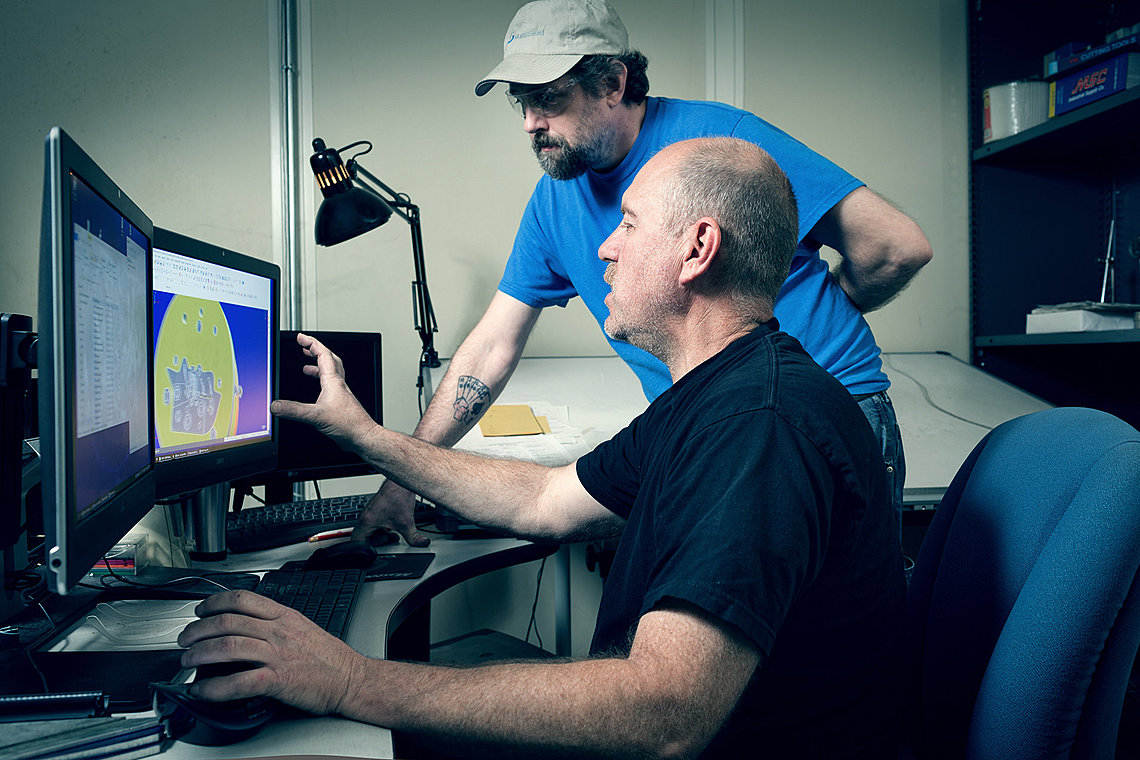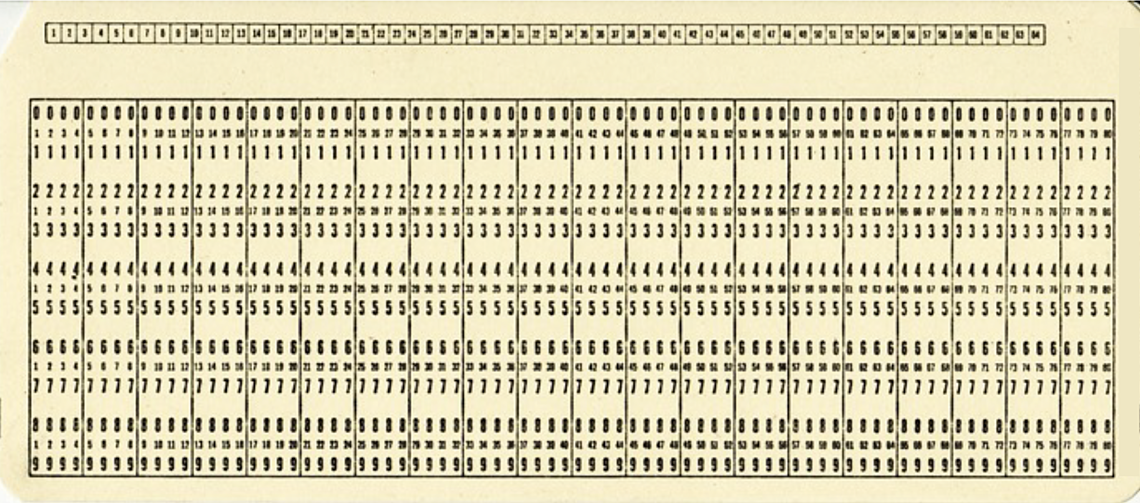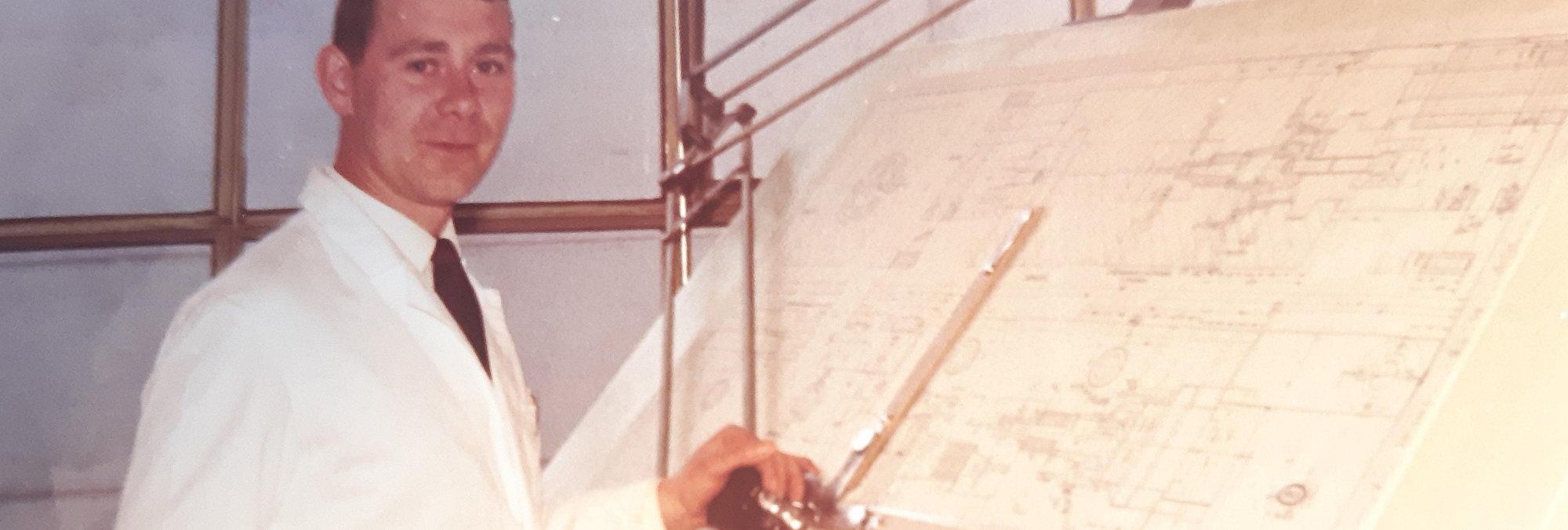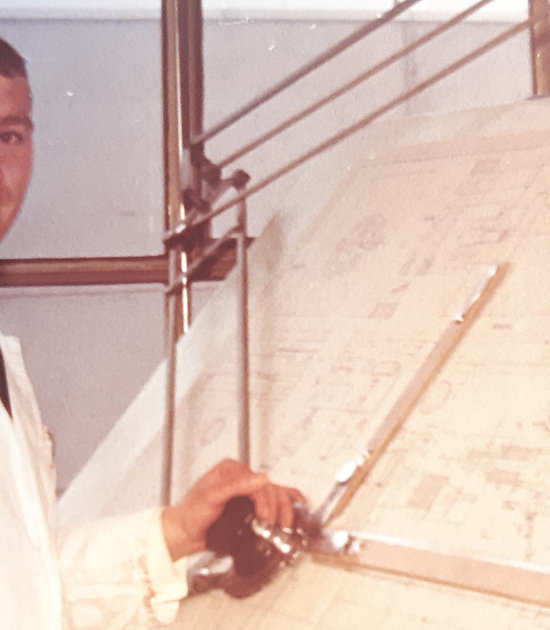From the drawing board to CAD designer
Drawing boards have not existed in our company for many years.
Nowadays, our “technical draftspersons” or CAD designers, as they are called today, design everything on the PC and in a three-dimensional space, of course. All the data sent by customers for the CAD design in the first stage can be imported digitally, and the finished designs transferred to the CNC machines for production in the downstream process. While each hand-made product was unique in the past, all products are 100 % identical today. Which also raises the bar for quality and workmanship, of course.
Even while technical progress is thought to make many jobs expendable, all these developments indicate that the task as such is merely evolving, because the same people who used to produce designs by hand on the drawing board still work as CAD designers.

From punch card to digitalization - accounting history
Who still knows this? The punch card – the mother of today’s data entry. A small paper card with 80 columns and 12 lines, able to contain up to 4,096 characters of information. The small sheet of paper was the beginning of today’s digital data entry, and also used as an innovation in our company at the time. In current terms, 80 bytes of information could be recorded on each card. The basic version of today’s smartphones usually contains memory cards with 128 Mb, which would amount to 1.6 billion individual punch cards like these. Quite a lot of wastepaper to fit into such a small cell phone! It used to be common practice in many companies for “data typists,” as the job was called back then, to sit in large halls featuring hundreds of so-called punch card punchers and transfer the handwritten data onto the punch cards. These could later be read by a machine and the data recorded in the computer.
But what information was recorded on these punch cards? For example the sales per customer and day: The first 5 columns would be used for a 5-digit customer number, the next 4 for 4-digit product numbers, and the subsequent columns contained the information on how often the product was sold.
E.g., customer 12345 was sold a total of 25 pieces of product 2222. If there were 28,000 different sales that day, 28,000 such punch cards would need to be punched as well.
In our company, the punch cards were used for payroll accounting, for example. Each number in columns 1-80 thus stood for a certain position on the payroll. One column for net pay, one for vacation pay, for the tax bracket, and so on. The payroll department hence prepared a separate punch card for each employee for each position on the payroll. If position 10 stood for the bank transfer, for example, the lines would contain the employee’s net salary and account number. In other words, exactly the information that the bank needed to transfer the wage or salary to him or her. One of our contemporary witness received the punched cards from the personnel department and pre-sorted them with the help of a so-called punch card sorter. To do this, she placed the stacks of cards in the machine and told it how to sort them. Even the best machines went on strike sometimes and quite a few of these cards would be broken, and then had to be re-punched by hand with a stamper. The machine was moreover unable to read all the cards if any holes were not punched correctly, for example. On payday, all the cards with a hole in the bank transfer column had to be sorted into one and the same stack. This because all these punched cards were brought to the bank by in-house drivers. The bank also had a card reader at the time and transferred the money to all employees based on the information punched out. A small fun fact in this regard: A few years earlier, wages were still paid out in cash at the company, and it was not uncommon for loving wives to be waiting for their husbands in front of the building on payday to bring the money home safe and sound.
This would hardly be imaginable today! Most processes are fully digital, and our systems also have many external interfaces that can automatically draw on data from the tax office or banks, for example. But if you ask our contemporary witness - who is now retired - how she liked her work back then, she responds with tremendous joy in her voice: “I really enjoyed the work, all those years!” And that is probably the nicest statement you can make about your professional life at retirement age!







